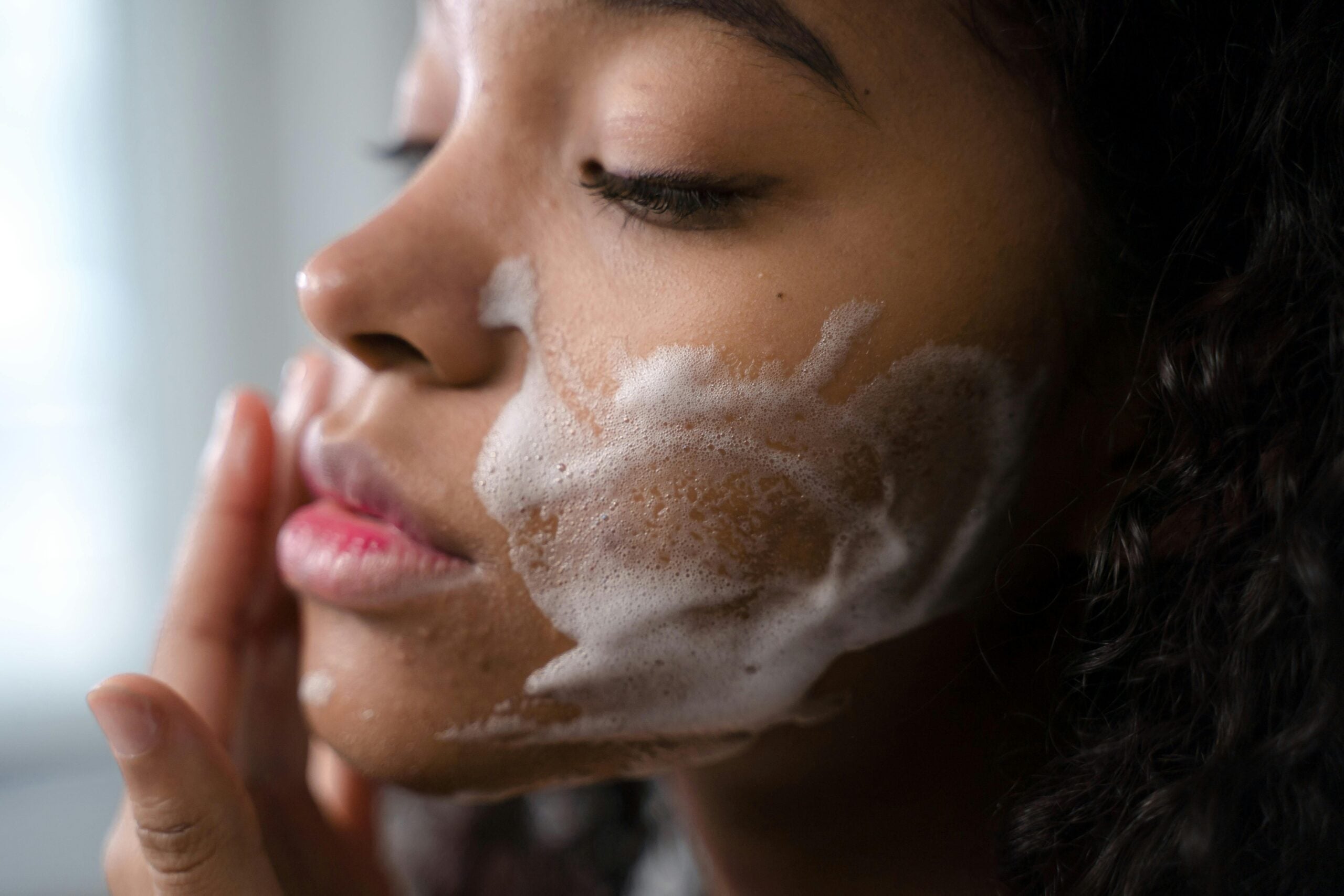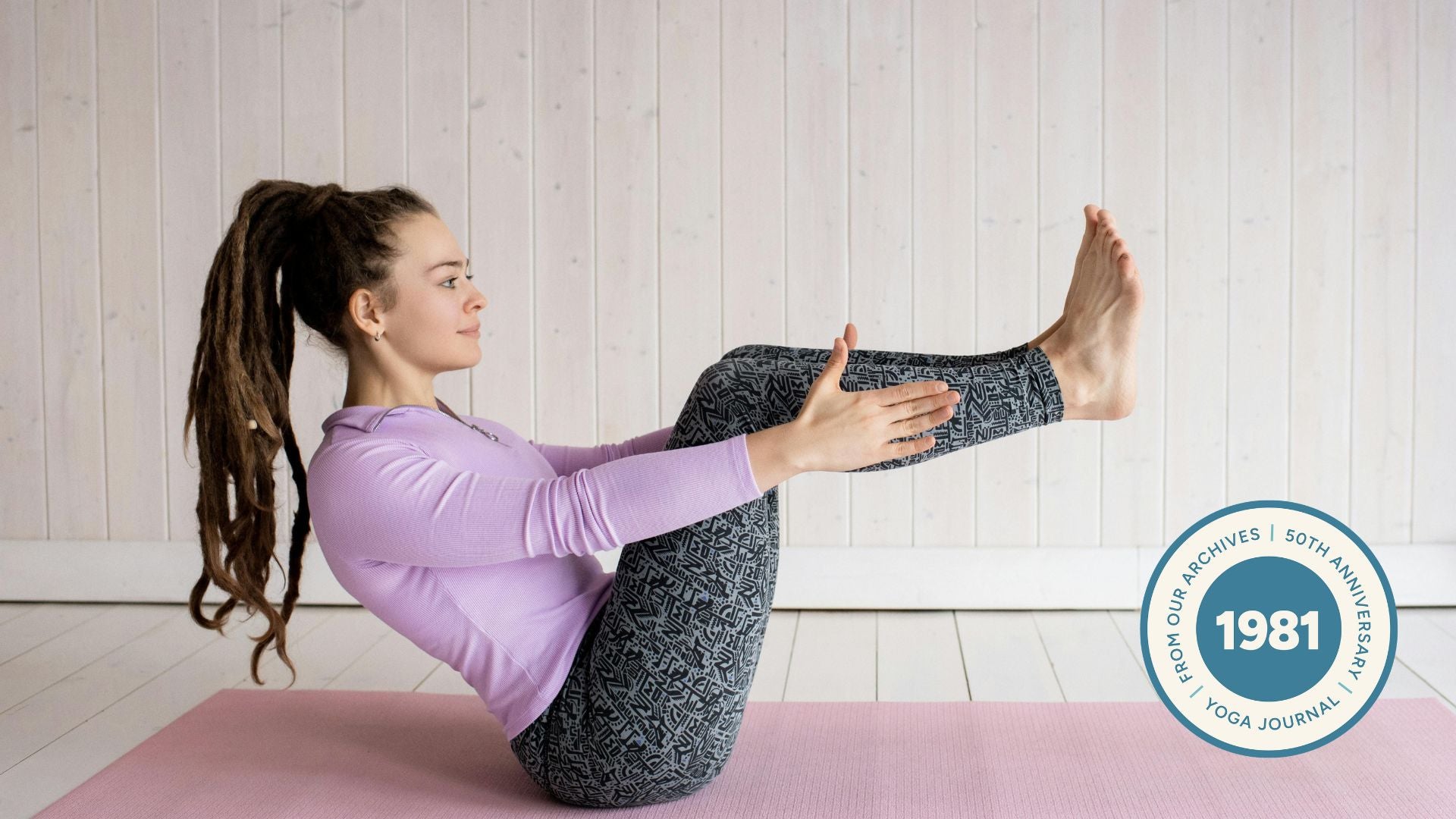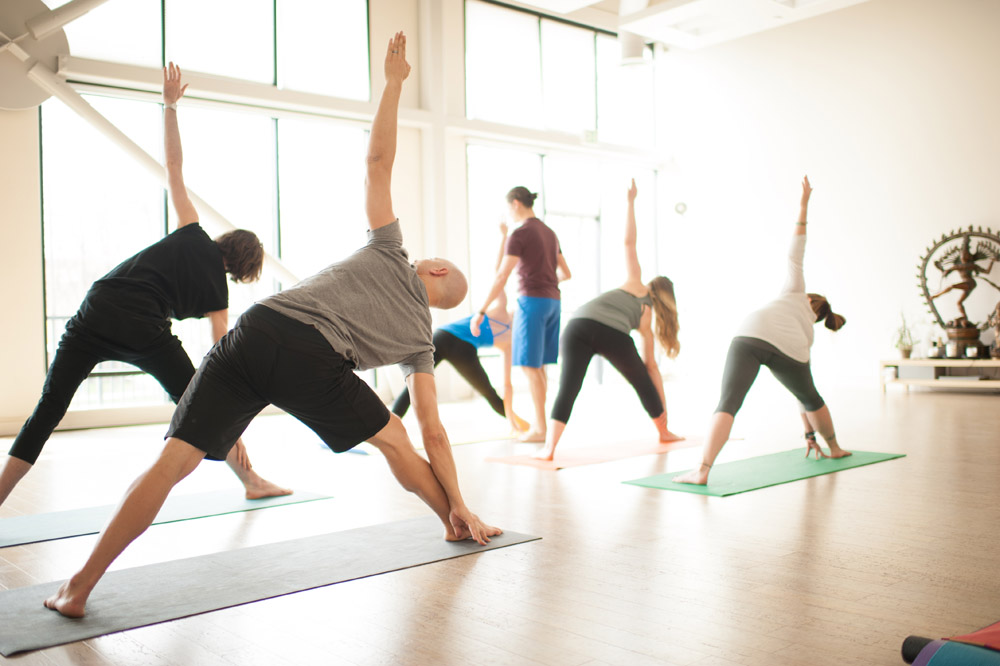Mrs. Gillen, if everyone did yoga, the world would be pink!
This comment from an 11-year-old boy was typical of those Lynea heard from the boys in her elementary school’s behavior classroom when she first brought in yoga 25 years ago. And considering how the image of the thin, white, blonde, young, flexible woman doing yoga still dominates in media to this day, it’s no surprise that many boys (and men) still see the practice as a strictly female pastime.
Making Yoga “Relateable”
Anyone who has tried to get their husband to a yoga class has probably encountered the many reasons men don’t relate to yoga. But when my karate teachers brought a yoga teacher into our dojo 50 years ago, we didn’t complain. Why not? They framed yoga in a way that we could understand and desire. For us, it meant things like the ability to kick higher and stay relaxed when sparring with someone who was trying to hit you. Breathing techniques helped us to aerobically recover faster.
What they didn’t tell me – and what I later discovered – was that my yoga practice would also help me deal with anger, gain perspective, control impulsivity, accept more, and stay focused.
Looking back, I realize that that early introduction was critical in my development as a man. It’s a story I share in our Wellness 1 training, in which Lynea and I also share some of our five favorite tips for getting boys and even husbands into yoga:
-
Reframe
One of the best ways we’ve found to connect with boys and men in our yoga classes is to use stories of how professional athletes use yoga to improve their performance. For instance, you can say things like, “Look at the ready position of a football center, and you’ll see how Straddle pose can help,” or “Ever see a professional basketball player take a few long, slow breaths before shooting a clutch free throw?” Or you can talk about legends such as Kareem Abdul-Jabbar, one of the NBA’s all-time scorers, who credits his yoga practice for his long career.There are plenty of examples of athletes doing yoga.
“I think it’s really exciting,” said Jennilyn Carson, a yoga teacher who writes the blog YogaDork. “When you hear that football players do yoga, it changes the image, helps make it more accessible. Yoga isn’t just for girls, or for the thin and flexible. In fact, it’s just the opposite. It helps people who aren’t thin or flexible.”
-
Use Language of Strength
It wasn’t until we changed the name of our boys’ yoga class to “Jedi Training: Yoga Calm for Boys” that enrollment took off. After all, don’t Jedi knights exemplify the yogic principles of self-control, self-knowledge, and a respect for the force (i.e., “life”)? And what young boy doesn’t want to be recognized for heroic actions in the service to others?Try using language like, “Activate your body like a superhero!” the next time you teach Mountain pose or, “Send laser beams from your fingertips!” when teaching Warrior 1 and Star.
-
Challenge Them & Acknowledge Their Strength
Ask which pose would help them achieve their sports goals and how long should they hold it. Then have them lead the group in that pose while another student beats a frame drum to count. Finish by asking for “compliments” from the group on how the leaders did.Our Online Certification Courses highlight the use of these and other motivational techniques.
-
Practice Ignoring to Focus
 Every great athlete has to learn how to stay focused when under pressure, and kids can certainly relate to the need to ignore distractions! We love our Tree Circle and Tree Challenge series (included in our book Yoga Calm for Children) for this, where students actively practice ignoring others who are trying to throw them off.
Every great athlete has to learn how to stay focused when under pressure, and kids can certainly relate to the need to ignore distractions! We love our Tree Circle and Tree Challenge series (included in our book Yoga Calm for Children) for this, where students actively practice ignoring others who are trying to throw them off.Brain research validates these and other yogic techniques, as we now understand the benefits of strong proprioceptive input for nervous system regulation and the role inhibition plays in lighting up the attention centers of the brain.
-
Visualize to Realize
Most all top athletes and teams work with high performance sports psychologists. Predominantly, what they are teaching players are relaxation, meditation, and visualization techniques. Every athlete knows how important it is see yourself on top of that podium, to believe that you can do it and to speak your dreams.Use our Positive Self Talk – “I am strong. I am in control. I can do it.” – when you first start teaching Yoga Calm. Post those or similar statements of your own where all the students can see them. Later, ask the students which words they used after a challenging pose. Write them up on the board for the whole class to see.
Another technique is to use a guided relaxation at the end of yoga class. Ask students to “imagine seeing yourself doing something really great that took practice and great effort. It could be anywhere – at school, with your friends, perhaps in your favorite sport. What did you do? Who was there with you? How did you prepare?” After the visualization, ask them to share. Then discuss how every great deed began with a dream, a vision. Martin Luther King’s “I Have a Dream” speech is a great example.
Of course, there’s nothing like modeling to help with acceptance. We recently got a great comment on this from a student who just finished her online course with us:
What is so funny is that my significant other, Joe, actually has been watching the videos with me! Ha! Now this is a blue collar male who eats meat and taters!! AND he loves the videos!! And is also commenting on how great Jim and Lynea are as a team! HA! He said “You should keep doing yoga”! My response: “Yeah, and you should start!!” hahaha!
For more tips, see our post “Working with Yoga-Resistant Teens.”
Updated from the original







